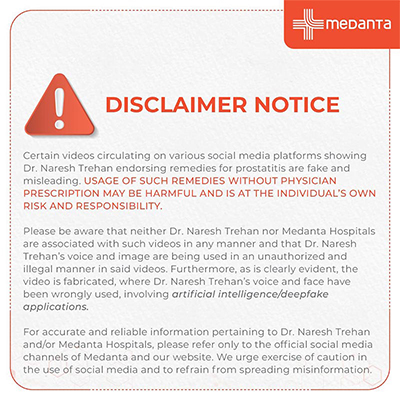Arthroscopy Surgery: Procedure, Benefits, and Recovery

TABLE OF CONTENTS
Arthroscopy is one of the most accessible surgical procedures in orthopaedic medicine today. This minimally invasive technique has replaced traditional open surgery for many joint conditions because it offers remarkable benefits to patients.
Arthroscopy uses a small fiberoptic camera that goes through a tiny incision. The surgeon makes additional small cuts to insert surgical instruments. The development of arthroscopy has substantially changed orthopaedic practice since doctors first started using it. Doctors call it one of the most significant medical advances of the 20th century. The procedure has grown from a simple diagnostic tool to a sophisticated treatment method.
Arthroscopy Indications
Modern arthroscopy techniques allow surgeons to operate on almost all major body joints. Better optical technology, instruments and implants have made arthroscopy much more common.
Knee and shoulder joints
Knee arthroscopy stands out as the world's most common arthroscopic procedure. Doctors can see inside the knee joint through tiny cuts instead of opening up the whole joint. This technique helps treat several conditions, including:
Torn meniscus (removal, repair or transplantation)
An anterior cruciate ligament (ACL) or posterior cruciate ligament reconstruction
Removal of inflamed synovial tissue
Trimming or reconstruction of damaged articular cartilage
Removal of loose bone or cartilage fragments
Treatment of kneecap (patella) problems
Treatment of knee infections
Shoulder arthroscopy ranks as the second most popular orthopaedic arthroscopic procedure. Doctors use it to fix rotator cuff tears, shoulder impingement, and other issues in this complex joint. The procedure can address:
Rotator cuff tears and tendinitis
Biceps tendon injuries
Bone spurs
Frozen shoulder
Labrum tears (injuries to the tissue around the shoulder socket)
Shoulder instability and dislocations
Osteoarthritis
Hip, wrist, and ankle joints
Hip arthroscopy has grown significantly in recent years. Doctors can now diagnose and treat hip problems that once required more invasive surgery. The camera helps them fix labral tears, remove loose bodies, and treat early arthritis in the hip joint.
Wrist arthroscopy lets doctors check and treat complex wrist joint structures. This method works great to address the following:
Carpal tunnel syndrome
Ganglion cysts
Wrist arthritis
Ligament tears in the wrist
Ankle arthroscopy offers a less invasive way to treat ankle problems. Common procedures include:
Ankle fusion for end-stage arthritis
Fracture repair and proper bone alignment
Ligament tightening for ankle instability
Treatment of osteochondral defects caused by fractures or sprains
Most procedures take about an hour at an outpatient surgical centre. Patients can go home the same day.
Spine and jaw
Arthroscopy now reaches beyond major joints into specialised body areas. Spine arthroscopy shows how far this technique has come by offering a less invasive approach to spinal procedures. Spine surgeons use these methods to:
Perform lumbar decompression
Do spinal fusion
Complete lumbar discectomy
Treat herniated discs
Fix spinal stenosis
Repair fractured vertebrae
The temporomandibular joint (TMJ) or jaw joint also benefits from arthroscopic methods. TMJ arthroscopy helps doctors:
Diagnose or confirm jaw joint problems
Reduce pain by washing out the joint
Improve function through small interventions
A TMJ arthroscopy requires just a small needle entry or cut in front of the ear. The surgeon then inserts a camera and checks the joint. Sometimes, they need to move the lower jaw to better see the cartilage and joint space.
Arthroscopic techniques for joints all over the body are one of the biggest advances in modern orthopaedic surgery. New uses and improvements keep coming up, giving patients faster recovery times and less invasive treatment options.
Arthroscopy Procedure
Arthroscopy works in two ways. Doctors can spot joint damage without major surgery and fix many issues during the same procedure by putting pencil-thin tools through other small cuts.
The arthroscopic procedure follows these steps:
The surgeon makes a tiny cut (about 4-6 mm) near the affected joint
They insert the arthroscope with its camera through this opening
Fibre optics light up the joint's inside
The camera shows bigger images on a video screen
They might make extra small cuts to put in special surgical tools
The surgeon looks at joint structures and fixes what's needed
The surgeon can see cartilage, ligaments, and other parts perfectly. For instance, they can check under the kneecap and look at vital ligaments when working on a knee joint. This clear view helps them find the exact type and size of an injury.
Benefits of Arthroscopy
Patients who pick arthroscopy over traditional open surgery see many advantages during their surgical experience, including:
Smaller cuts and faster healing
Arthroscopic procedures require much smaller incisions than traditional surgery. Rather than large openings, surgeons make tiny incisions measuring just 0.8-1.0 cm. These small entry points let the arthroscope and surgical instruments reach the joint while protecting surrounding healthy tissue.
The minimal approach gives several healing advantages:
Less tissue trauma leads to reduced swelling and inflammation
Smaller wounds heal faster at the surgical site
Minimal scarring shows up compared to traditional open surgical procedures
Healthy tissue stays mostly undisturbed during the procedure
The synovial membrane keeps its integrity, which helps joint function recover faster
In addition, patients heal quicker overall. Bandages can be removed within a day or two after surgery and switched to small sterilised adhesive strips. This quick healing lets patients start physical therapy sooner if needed, which cuts down the total recovery time.
Less pain and fewer risks
Arthroscopy reduces post-surgical discomfort compared to open procedures. Studies show that good post-operative pain management relates to lower morbidity and faster recovery times. Pain management through proper intra-articular medication works well to reduce the surgical stress response.
Pain and risks drop for several reasons:
Less exposed internal tissue means less inflammation
Smaller incisions lead to much less blood loss compared to open surgery
Small wounds bring down infection risk dramatically
The technique lowers the risk of complications like bleeding and nerve damage
Post-operative pain feels less intense and needs fewer pain medications
Special pain management techniques for arthroscopy can extend pain relief
Outpatient procedure in most cases
One of the best practical benefits of arthroscopy is that doctors can perform most procedures on an outpatient basis. Patients come to the surgical facility, have the procedure, and go home the same day. This setup helps both patients and the healthcare system.
Outpatient arthroscopy brings these benefits:
Lower costs than inpatient hospital procedures
Reduced facility fees since many surgeries happen in specialised surgical centres
Recovery happens at home
Many people can start desk work and light activities within days
Daily life and work schedules face less disruption
Less time in the hospital means lower risk of hospital-acquired infections
The economic impact is substantial. Almost all arthroscopic procedures can take place in outpatient settings, with some even happening in office-based facilities. This approach saves money for patients and healthcare systems while maintaining excellent outcomes.
Arthroscopy represents a major step forward in surgical technique that helps patients through less trauma, faster healing, reduced pain, and more convenience. The minimally invasive nature leads to better patient experiences throughout all stages of surgical care.
Risks
Arthroscopy ranks among the safest surgical procedures, but it carries certain risks:
Possible side effects and complications
Infection: Although deep joint infections in the surgical area are rare, they need immediate medical attention.
Blood clots (deep vein thrombosis): Patients with blood disorders or genetic conditions face higher risks of clotting
Nerve damage: This can happen during procedures like meniscus suturing
Persistent swelling or stiffness: A small number of patients experience these symptoms post-surgery
Instrument breakage: This affects less than 1% of all arthroscopic procedures
Tissue damage: Joint structures can get damaged from instrument movement within the joint
Complex arthroscopic procedures bring higher risks. Ligament reconstruction shows the highest reported complication rate, with meniscal repair, chondroplasty, and meniscectomy following behind.
When to Call a Doctor
Recovery after arthroscopy needs careful monitoring. Some symptoms signal complications that need quick treatment.
Call your doctor right away if you notice:
Temperature or fever above 38.3°C/101°F
Severe or increasing pain that medications don't help
Bright red blood soaking through the bandage
Severe or increasing redness or swelling around the incision site
Foul-smelling or discoloured discharge from the wound
Numbness or tingling in the operated area or extremity
Signs of blood clots - pain in your calf, back of knee, thigh, or groin
Redness and swelling in your leg or groin
Quick detection of complications prevents serious problems and leads to better outcomes. Regular check-ups matter, even when recovery seems smooth. Missing these appointments might leave complications unnoticed or slow down recovery.
Conclusion
Since its first use, arthroscopy has revolutionised orthopaedic surgery. This minimally invasive technique helps surgeons diagnose and treat joint problems through tiny incisions instead of large openings. Patients feel less pain, heal faster, and return to their normal activities sooner.
Arthroscopy offers many advantages, but patients need to understand the risks involved. They should watch for warning signs like fever, severe pain, or unusual swelling to ensure a safe recovery. Most people recover well with proper follow-up care and their doctor's instructions.
Arthroscopy stands as one of modern orthopaedic medicine's most important advances. Surgeons continue to develop new techniques and apply arthroscopic approaches to more joints throughout the body. More patients can now benefit from less invasive surgical options that reduce pain and speed up recovery. Patients should discuss with their doctors whether arthroscopy is right for their joint condition.
FAQs
When should I contact my doctor after arthroscopy?
You should monitor your recovery closely after your arthroscopy procedure. These warning signs need medical attention:
Temperature rises above 38.3°C/101°F
Unusual drainage or pus from incisions
Redness that spreads beyond the incision area
New numbness or tingling in the operated area
Pain in your calf, back of knee, thigh, or groin (potential signs of blood clots)
What are the main benefits of arthroscopy compared to traditional surgery?
Arthroscopy offers several advantages, including smaller incisions, faster healing, less pain, reduced risk of infection, and quicker recovery times. Most arthroscopic procedures can be performed on an outpatient basis, allowing patients to return home the same day.
Which joints can be treated with arthroscopic surgery?
Arthroscopy is most commonly used to treat knee and shoulder joints. However, doctors can also use it to treat the hip, wrist, ankle, elbow, and even less common areas like the spine and jaw. The technique has expanded to treat various joint problems throughout the body.
How long does recovery typically take after arthroscopy?
Recovery time varies depending on the specific procedure and joint involved. Many patients can remove bandages within a day or two and resume light activities within days. However, full recovery may take several weeks, especially for more complex procedures or physically demanding jobs.
What are the potential risks or complications of arthroscopy?
While arthroscopy is generally safe, potential risks include infection, blood clots, nerve damage, persistent swelling or stiffness, and tissue damage.






